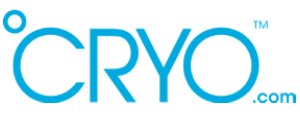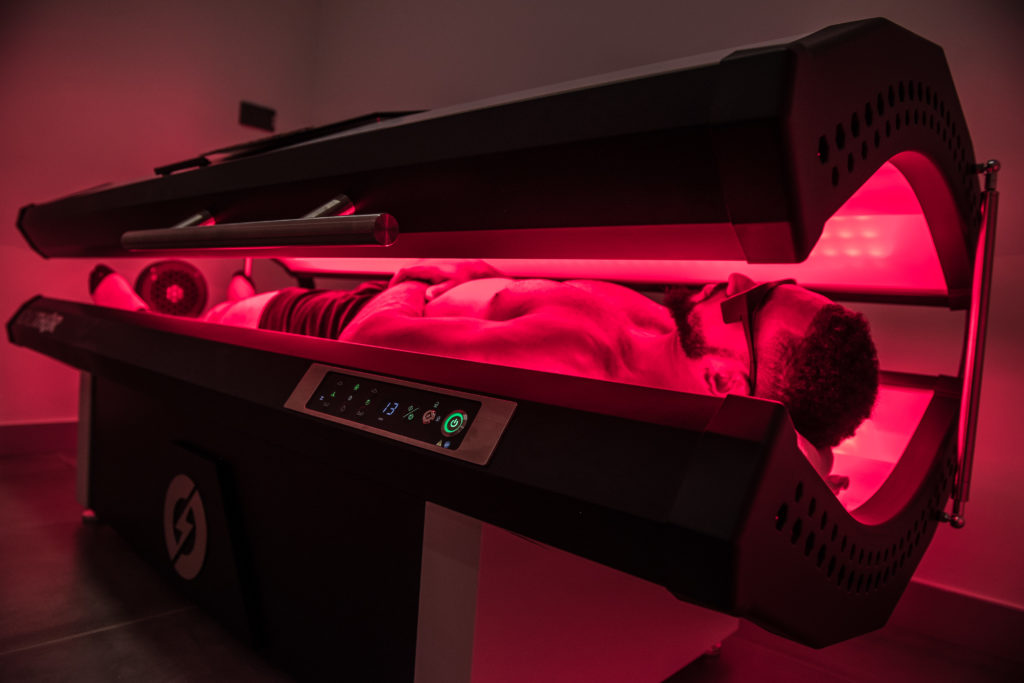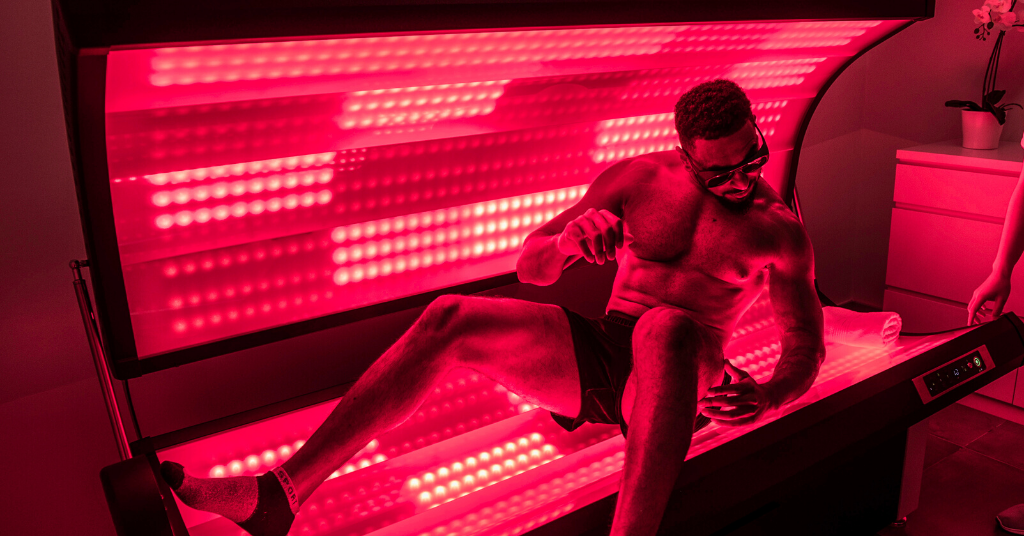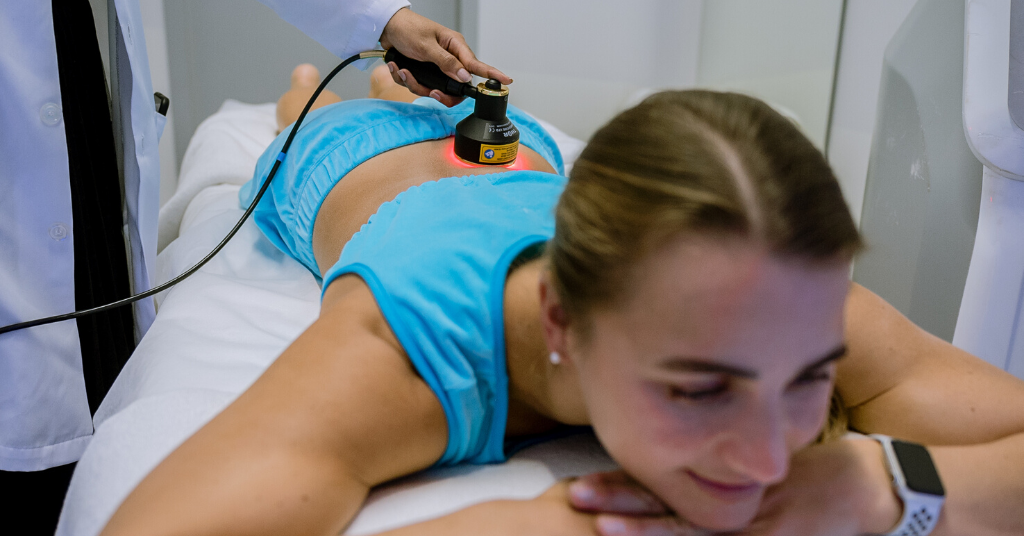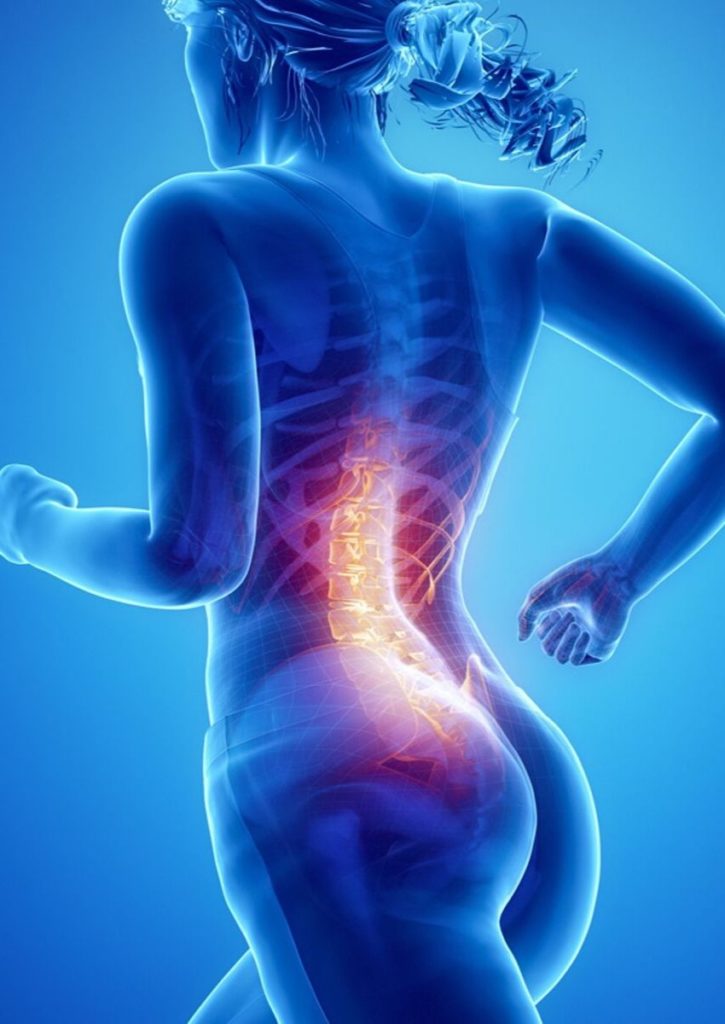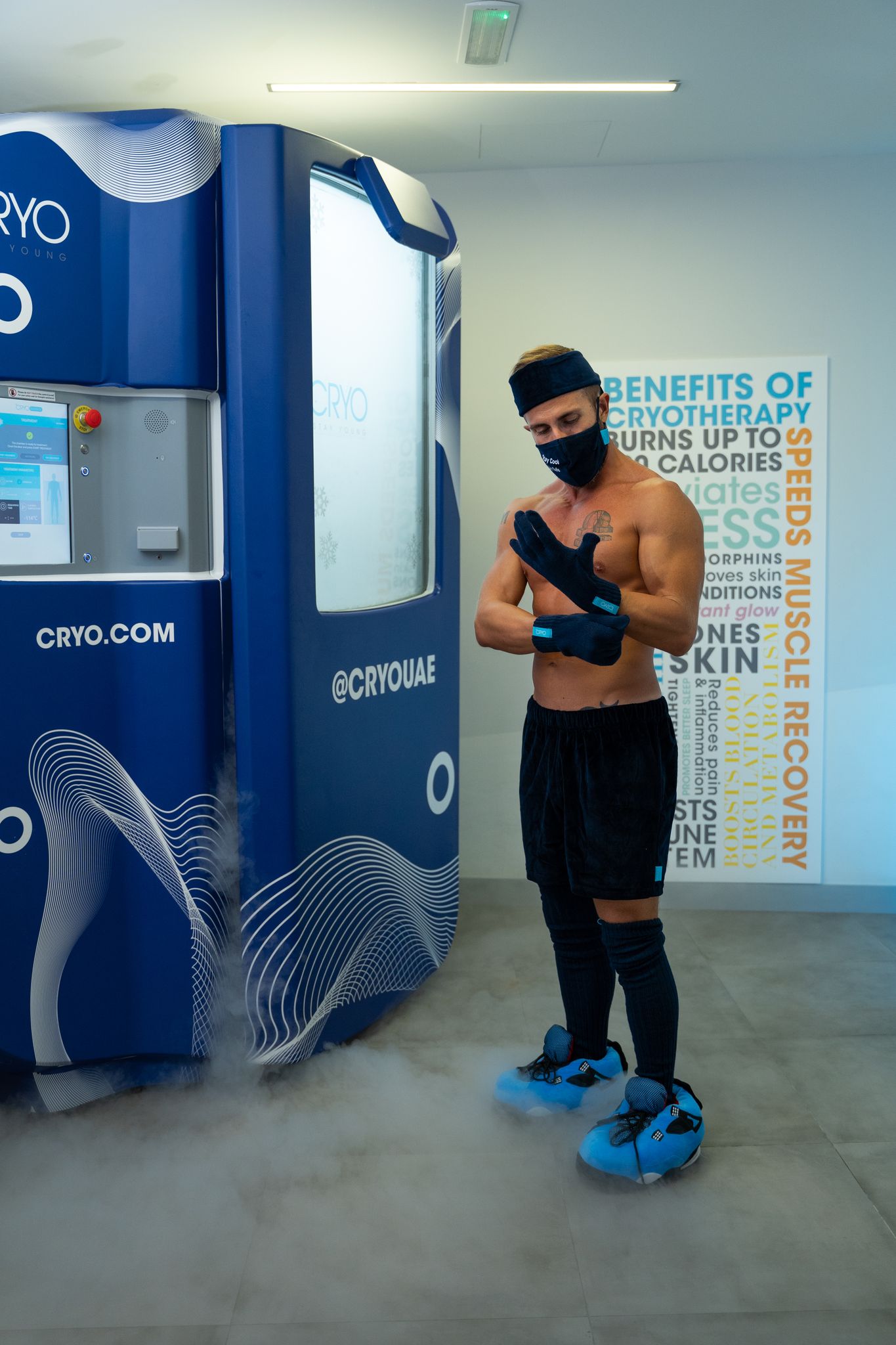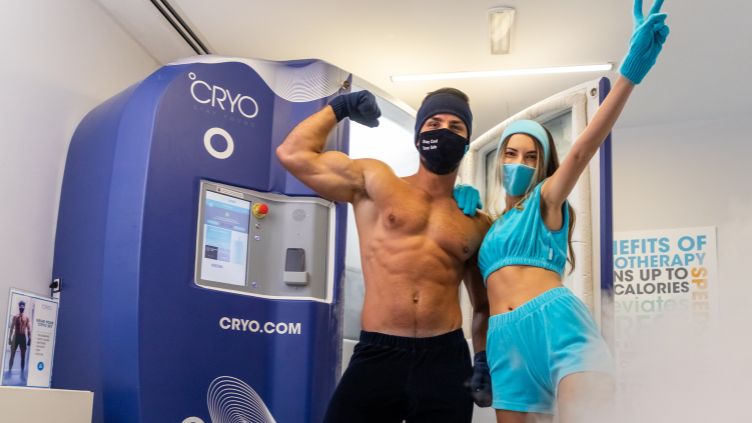Medical Application for Photobiomodulation (Low Level Light Therapy)
°CRYOTHOR is a whole-body light therapy device that uses RED and NEAR INFRARED LIGHT to treat injuries, reduce pain, relax muscles/joints, and increase blood circulation. The therapy is called PHOTOBIOMODULATION or PBM
Photobiomodulation is a non-invasive, non-thermal therapy that stimulates cells to generate more energy and undergo self-repair through the use of near-infrared light (NIR). Also known as low-level light (or laser) therapy (LLLT).
History of LLLT
In 1903, Dr. Nils Finsen was awarded a Nobel Prize for his contribution to the treatment of diseases, especially lupus vulgaris, with concentrated light radiation In 1960, Professor Maiman TH [built the first working red ruby laser but it was not until 1967 when Mester E et al. [was able to demonstrate the phenomenon of “laser biostimulation” In 1999, Whelan H al. presented his work on the medical applications of light-emitting diodes (LED) for use on the NASA space station. Subsequently over 400 Phase III randomized, double-blind, placebo-controlled trials have been published, with over 4000 laboratory studies of LLLT.
Orthopedic Outcomes
According to the more than 4000 studies on pubmed.gov, it can be concluded that the majority of laboratory and clinical studies have demonstrated that LLLT has a positive effect on acute and chronic musculoskeletal pain. Due to the heterogeneity of populations, interventions, and comparison groups, this diversity means that every single study has not been positive.
Pain is a very complex condition that presents in different forms with an interplay of mechanical, biochemical, psychological, and socioeconomic factors. It is extremely challenging to compare LLLT to other treatments, and LLLT regimens are complicated by different lengths of treatment, all without standardization of wavelengths and dosages. Currently, there have been no long-term (greater than 2 years follow up) human clinical studies that have evaluated LLLT. The overall positive short term clinical studies in addition to strong laboratory studies should give the clinical confidence that LLLT may be beneficial for many individuals suffering from musculoskeletal pain, regardless of the cause. Consideration of evidence-based treatment studies for LLLT has led to the determination that LLLT is classified as experimental/investigational by insurance companies (BCBSKS 2013), while the American Academy of Orthopedic Surgeons has no recommendations for or against its use. With FDA approval for temporary relief of muscle and joint pain, this underlines the need for further well-designed clinical studies.
The Effect of LLLT in Wound Healing
Chronic wounds, especially in diabetic patients, represent a challenging health issue. Since standard treatment protocols often do not provide satisfactory results, additional treatment methods-like phototherapy using low-level light therapy is being investigated to evaluate the effect of phototherapy with light-emitting diodes on chronic wound treatment in diabetic and nondiabetic patients. According to the study by (Frangez I, Cankar K, et al 2017) phototherapy with LED was shown to be an effective additional treatment method for chronic wounds in diabetic and non-diabetic patients. Another study showed that Low-Level Laser Therapy is beneficial as an adjunct to conventional therapy in the treatment of diabetic foot ulcers. (Basavaraj M. Kajagar Ashok S. et al 2012)
The Effect of LLLT in Tendinopathy
Tendinopathies plague many active individuals, causing pain and reducing sports activity by decreasing ROM and strength. Tendinopathy refers specifically to the disease of the tendon.
Tumilty S, in their study investigating the effectiveness of a regime of fewer exercise sessions combined with photobiomodulation for the treatment of Achilles tendinopathy, they found that Twice-daily exercise sessions are not necessary as equivalent results can be obtained with two exercise sessions per week. The addition of photobiomodulation as an adjunct to exercise can bring added benefit. (Tumilty S, Mani R, Baxter GD 2016)
On a study focusing on LLLT treatment effects in shoulder tendinopathy. They found that optimal LLLT can offer clinically relevant pain relief and initiate a more rapid course of improvement, both alone and in combination with physiotherapy interventions. (Haslerud S, et al 2015). Another study found that the conservative treatment of shoulder pain arising from adhesive capsulitis of the shoulder in the elderly using LLLT, with a positive clinical result of more than 90% and with clinical efficacy both in the short-term and the medium-term. (Ip D, Fu NY, 2015)
The Effect of LLLT Sports injuries
Low-level laser therapy (LLLT) has been used for the last few years to treat sports injuries, for example, Eccentric exercises (EEs) are recommended for the treatment of Achilles tendinopathy, but the clinical effect from EE has a slow onset. The addition of low-level laser therapy (LLLT) to EE accelerates clinical recovery from chronic Achilles tendinopathy when added to an EE regimen which causes more rapid clinical improvement. (Stergioulas A, et al 2008)
LLLT can also reduce oxidative stress and delay the onset of skeletal muscle fatigue. As proved in Leal Junior EC study where they found that LLLT appears to delay the onset of muscle fatigue and exhaustion by a local mechanism in spite of increased blood lactate levels. ( Leal Junior EC, et al 2008) Another study that compares three therapeutic protocols in treating edema in second-degree ankle sprains that did not require immobilization with a splint, under placebo-controlled conditions, they found that LLLT combined with RICE can reduce edema in second degree ankle sprains.(Stergioulas A, 2004)
The Effect of LLLT in Pain
Chronic pain has been linked to numerous physical and mental conditions and contributes to high healthcare costs and lost productivity. A limited number of studies estimate that the prevalence of chronic pain ranges from 11% to 40%. In 2016, an estimated 20.4% of U.S. adults had chronic pain and 8% of U.S. adults had high-impact chronic pain. Both were more prevalent among adults living in poverty, adults with less than high school education, and adults with public health insurance.
In a study comparing the efficacy of LLLT using any wavelength with placebo or with active control in acute or chronic neck pain, they identified 16 randomized controlled trials including a total of 820 patients. In acute neck pain, the study shows that LLLT reduces pain immediately after treatment in acute neck pain and up to 22 weeks after completion of treatment in patients with chronic neck pain. (Roberta T Chow, et al 2009)
Another study was investigating the clinical effects of low-level laser therapy (LLLT) in patients with acute low back pain (LBP) with radiculopathy, The outcomes were pain intensity lumbar movement, pain disability; and quality of life. Subjects were evaluated before and after treatment. The results of this study show better improvement in acute LBP treated with LLLT used as additional therapy. (Konstantinovic LM, et al, 2010)
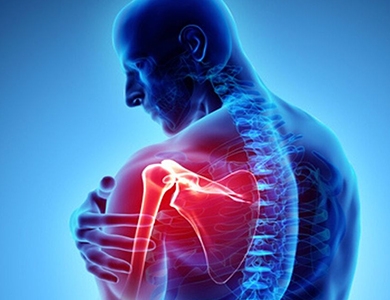
The Effect of LLLT in Muscle Fatigue, Endurance, and Recovery
Photobiomodulation therapy (PBMT) has recently been used to alleviate post-exercise muscle fatigue and enhance recovery, demonstrating positive results.
In a study evaluating the effects of PBMT (through low-level laser therapy) on post-exercise skeletal muscle recovery and identify the best output power. They found that PBMT before exercise achieves the best outcomes in enhancing muscular performance and post-exercise recovery and it delayed onset muscle soreness. (de Oliveira AR, et al 2017)
Lanferdini FJ et al in their study was investigating the effects of different LLLT dosages on cyclists’ performance in time-to-exhaustion tests and the effects of LLLT on the frequency content of the EMG signals to assess fatigue mechanisms. By comparing twenty male cyclists participated in a crossover, randomized, double-blind, and placebo-controlled trial. They found out LLLT increased time-to-exhaustion in competitive cyclists, and they suggest this intervention as a possible non-pharmacological ergogenic agent in cycling.
In a study aimed to determine the effectiveness of photobiomodulation therapy (PBMT) and cryotherapy, in isolated and combined forms, as muscle recovery techniques after a muscle fatigue-inducing protocol. They found that the use of phototherapy is more effective than the use of cryotherapy for muscle recovery. (De Marchi T, 2017)
Bibliography:
Basavaraj M. Kajagar Ashok S. Godhi Archit Pandit S. Khatri (2012) Efficacy of Low-Level Laser Therapy on Wound Healing in Patients with Chronic Diabetic Foot Ulcers—A Randomised Control Trial http://www.ncbi.nlm.nih.gov/pubmed/?term=24082586
Costa MM, Silva SB, Quinto AL, Pasquinelli PF, de Queiroz Dos Santos V, de Cassia Santos G, Veiga DF (2014)Phototherapy 660 nm for the prevention of radiodermatitis in breast cancer patients receiving radiation therapy: study protocol for a randomized controlled trial https://www.ncbi.nlm.nih.gov/pubmed/?term=Phototherapy+660+nm+for+the+prevention+of+radiodermatitis+in+breast+cancer+patients+receiving+radiation+therapy%3A+study+protocol+for+a+randomized+controlled+trial.
De Marchi T, Schmitt VM, Machado GP, de Sene JS, de Col CD, Tairova O, Salvador M, Leal-Junior EC (2017) Is photobiomodulation therapy better than cryotherapy in muscle recovery after a highintensity exercise? A randomized, double-blind, placebo-controlled clinical trial. http://www.ncbi.nlm.nih.gov/pubmed/?term=28054262
de Oliveira AR, Vanin AA, Tomazoni SS, Miranda EF, Albuquerque-Pontes GM, De Marchi T, Dos Santos Grandinetti V, de Paiva PRV, Imperatori TBG, de Carvalho PTC, Bjordal JM, Leal-Junior ECP (2017) Pre-Exercise Infrared Photobiomodulation Therapy (810 nm) in Skeletal Muscle Performance and Postexercise Recovery in Humans: What Is the Optimal Power Output Photomed Laser Surg 2017 Nov http://www.ncbi.nlm.nih.gov/pubmed/?term=29099680
Frangez I, Cankar K, Ban Frangez H, Smrke DM (2017) The effect of LED on blood microcirculation during chronic wound healing in diabetic and non-diabetic patients-a prospective, double-blind randomized study http://www.ncbi.nlm.nih.gov/pubmed/?term=28342007
Haslerud S, Magnussen LH, Joensen J, Lopes-Martins RA, Bjordal JM (2015) The efficacy of low-level laser therapy for shoulder tendinopathy: a systematic review and meta-analysis of randomized controlled trials. http://www.ncbi.nlm.nih.gov/pubmed/?term=25450903
Ip D, Fu NY, (2015)Two-year follow-up of low-level laser therapy for elderly with painful adhesive capsulitis of the shoulder. https://www.ncbi.nlm.nih.gov/pubmed/26045677
Konstantinovic LM, Kanjuh ZM, Milovanovic AN, Cutovic MR, Djurovic AG, Savic VG, Dragin AS, Milovanovic ND. (2010) Acute Low Back Pain with Radiculopathy: A Double-Blind, Randomized, Placebo-Controlled Study https://www.ncbi.nlm.nih.gov/pubmed/20001318
Lanferdini FJ, Bini RR, Baroni BM, Klein KD, Carpes FP, Vaz MA () Low-Level Laser Therapy Improves Performance and Reduces Fatigue in Competitive Cyclists. http://www.ncbi.nlm.nih.gov/pubmed/?term=28422520
Leal Junior EC, Lopes-Martins RA, Dalan F, Ferrari M, Sbabo FM, Generosi RA, Baroni BM, Penna SC, Iversen VV, Bjordal JM Laboratory of Human Movement, University of Caxias do Sul, Caxias do Sul, RS, Brazil., (2008) Effect of 655-nm low-level laser therapy on exercise-induced skeletal muscle fatigue in humans https://www.ncbi.nlm.nih.gov/pubmed/?term=Effect+of+655-nm+low-level+laser+therapy+on+exercise-induced+skeletal+muscle+fatigue+in+humans
Roberta T Chow, Mark ‘Johnson, Rodrigo A B Lopes-Martins, Jan M Bjordal (2009) Efficacy of low-level laser therapy in the management of neck pain: a systematic review and meta-analysis of randomised placebo or active-treatment controlled trials https://www.ncbi.nlm.nih.gov/pubmed/19913903
Stergioulas A, (2004)Low-level laser treatment can reduce edema in second degree ankle sprains. https://www.ncbi.nlm.nih.gov/pubmed/?term=%E2%80%A2%09Low-level+laser+treatment+can+reduce+edema+in+second+degree+ankle+sprains.
Stergioulas A, Stergioula M, Aarskog R, Lopes-Martins RA, Bjordal JM Peloponnese University, Sparta, Laconia, Greece.(2008) Effects of Low-Level Laser Therapy and Eccentric Exercises in the Treatment of Recreational Athletes With Chronic Achilles Tendinopathy
Tumilty S, Mani R, Baxter GD (2016) Photobiomodulation and eccentric exercise for Achilles tendinopathy: a randomized controlled trial. https://www.ncbi.nlm.nih.gov/pubmed/?term=Tumilty+S%2C+Mani+R%2C+Baxter+GD
